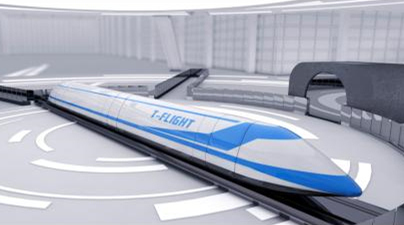
Space firm launches R&D on hyperloop.
(ECNS) -- A top engineer at China Aerospace Science and Industry Corp. (CASIC) said there’s no need to worry about passenger safety in a planned ultra-speed train that can “fly” at 4,000 kilometers an hour.
Chief engineer Mao Kai said the vehicle’s acceleration speed would be slower than a plane in taking off so passengers could be free of safety concerns.
Mao said other companies are researching high-speed transport systems, including two in the United States. But CASIC is the first company in the world to focus on supersonic ground transport.
He said China now has the human resources, economic strength and policy ready to conduct research while its economic growth also generates demand for such high-speed trains.
China can apply its leading technology developed in aerospace, including its supersonic and high temperature superconducting maglev, to develop the project.
Mao said the project would need private investment and funds from other sources. Research will be based on studies of construction and operation costs along with passenger fees. But he added costs are expected to fall due to developing technology and growing industry scale.
At a forum in Wuhan, capital of Hubei Province, Liu Shiquan, deputy general manager at CASIC, unveiled the “ultra-speed flying train" project, generating hot discussion online.
A train that can travel up to 4,000 kilometers an hour means the rail link could run five times faster than general passenger airplanes and 10 times quicker than traditional high-speed bullet trains. The "supersonic near-ground flight" would be realized through superconducting maglev technology and a tube transport system.
The ambitious project is said to include three stages: trains that can run up to 1,000 km/h among cities, 2,000 km/h among China’s megacity clusters, and 4,000 km/h for countries along the Belt and Road line.
Currently, the project team is cooperating with over 20 research institutes and an industry alliance that together own over 200 patent technologies in various areas.
Mao added that it’s natural for netizens to have questions about a new thing but that CASIC researchers will make solid efforts to turn it into reality.
In addition to its other advantages, the “flying” train would not consume fossil energy, be unaffected by weather conditions and link seamlessly with subways.


















































